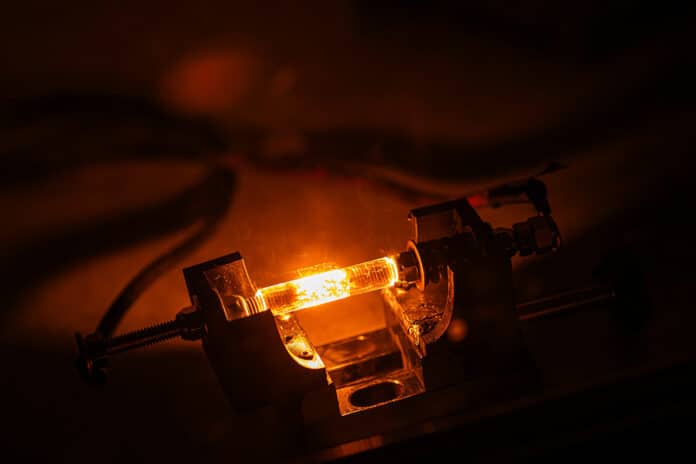Glass fiber-reinforced plastic (GFRP) is a versatile and durable material used in various applications, such as aircraft parts and windmill blades. Its increasing use has triggered an urgent need for proper end-of-life management strategies.
Due to its robust nature, it’s challenging to dispose of, and it often ends up in landfills once it reaches the end of its life. This leads to undesirable environmental contamination and waste of resources. And until now, there has been no good way to recycle it.
To address this issue, Rice University researchers and their collaborators have developed an energy-efficient upcycling method to transform glass fiber-reinforced plastic (GFRP) into silicon carbide, which has many practical applications, such as semiconductors and sandpaper.
It’s important to address the issue of managing GFRP waste in a more effective way. Some methods that have been attempted, such as incineration or solvolysis, are not ideal as they can be resource-intensive and lead to environmental contamination. According to postdoctoral research associate and Rice Academy Junior Fellow Yi Cheng, better approaches are needed to tackle this challenge.
“This material has plastic on the surface of glass fiber, and incinerating the plastic can generate a lot of toxic gases,” Cheng said. “Trying to dissolve GFRP is also problematic as it can generate a lot of acid or base waste from the solvents. We wanted to find a more environmentally friendly way to deal with this material.”
“We already knew that if we heat the mixture of metal chloride and carbon by flash Joule heating, we could get metal carbide – and in one demonstration, we made silicon carbide,” said James Tour, a professor of chemistry, material science, and nanoengineering at Rice University. “So we were able to leverage that work to come up with a process to transform GFRP into silicon carbide.”
The new process for recycling glass-fiber reinforced polymer (GFRP) involves grinding up GFRP into a mixture of plastic and carbon, adding more carbon to make the mixture conductive. The researchers then apply high voltage to it using two electrodes, bringing its temperature up to 1,600-2,900 degrees Celsius. This high temperature facilitates the transformation of the plastic and carbon to silicon carbide.
The approach can yield two different types of silicon carbide, which can be used for different applications, including as a superior capacity and rate performance battery anode material.
The proof-of-concept test conducted by Tour and colleagues to upcycle GFRP seems promising, and they are already working with outside companies to scale up the process for wider use. The operating costs to upcycle GFRP are much cheaper than incineration or solvolysis and are more environmentally friendly.
“This GFRP is a waste product that usually ends up in a landfill, and now you can turn it into a usable product that can help humankind,” he said. “This is exactly the kind of approach we need to support a circular economy. We need to find ways to take waste products from various applications and turn them into new products.”
Journal reference:
- Yi Cheng, Jinhang Chen, Bing Deng, Weiyin Chen, Karla J. Silva, Lucas Eddy, Gang Wu, Ying Chen, Bowen Li, Carter Kittrell, Shichen Xu, Tengda Si, Angel A. Martí, Boris I. Yakobson, Yufeng Zhao & James M. Tour. Flash upcycling of waste glass fiber-reinforced plastics to silicon carbide. Nature Sustainability, 2024; DOI: 10.1038/s41893-024-01287-w
